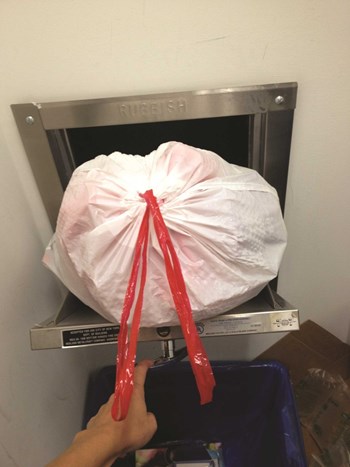
Keeping the trash chutes and collection rooms of multifamily buildings clean, sanitary and stench-free is a big job, and an important one. Poorly-maintained chutes are not just gross—they're breeding grounds for pests, bacteria, and other harmful contaminants you really don't want in your building. That's why it's critical that your building staff and maintenance professionals stay on top of keeping your chutes in good order.
Into the Hopper
Trash chutes—also called hoppers—were originally used to drop rubbish down to a basement incinerator, where it would be burned. While burning garbage is a pretty good way to get rid of tons of bulky, smelly trash, it's terrible for the environment. For that reason, incinerators were banned in most New York City residential buildings in the 1980s. Today, building refuse is routed to trash compactors where it's squashed into manageable parcels, which are in turn picked up by the Department of Sanitation (DSNY) or a private carting company.
Compactors are certainly an improvement over incinerators, but bags of trash still have to get down to a building's basement via a trash chute—and unfortunately, they don't always make it down there in one piece. Bags break, even in the compactor, and some residents will also stuff items in the chute that are clearly too large to fit (pizza boxes are a prime offender), causing backups. Careless residents will even throw dirty diapers and cat litter directly into the chute, sans bag. Just imagine being the next person to open the trash chute door after such shenanigans and getting a face full of bacteria-laden air.
Beware the Air in There
Waste material, debris, and allergens can build up in a building’s airways and passages, turning the duct system into a perfect environment for the proliferation of mold, bacteria, and other harmful organisms. Some studies have even shown bacterial growth, including salmonella and e.coli, on the inner surfaces of garbage chutes and near the trash rooms. And the problem doesn't stop at the chute—garbage chutes are equipped with vents, and the air inside can circulate into the hallways and even into individual apartments, exposing everyone in the building to airborne bacteria.
When chutes are not cleaned and maintained properly, grease, grime, and bits of debris can also pose an increased risk of fire. And let’s not forget the wildlife that can move in and turn a dirty trash chute into a five-star hotel; primarily roaches, rats, and mice. Vermin can be a year-round issue, but in the colder months when buildings are shut tight and food sources are scarce, the problems can multiply with alarming speed.
“Most well-kept buildings maintain trash chutes and compactors, but for those who don’t, the biggest issues are quality of life such as odors, roaches, mice and sometimes rats,” says Maria Vizzi of Indoor Environmental Solutions in the Bronx.
Sadly, she says that some buildings resort to just hanging a deodorizer in the trash room. “It’s like putting deodorant on an already smelly armpit,” she says. Buildings should schedule a cleaning or maintenance servicing at least one or twice a year, she says.
Aniello DeGuida, the building manager at The Cocoa Exchange at 1 Wall Street Court, makes sure that his building’s trash chutes are cleaned once a month. “We start at the top, our 16th floor, and use a cleaner that we drop down the chute,” says DeGuida. “Of course, we lock the chute doors while we are doing this. Then we hose it down and the water goes into a storm drain at the bottom of the garbage room. If you don’t maintain the chutes, it will take double the time to clean them next time. Regular maintenance also saves on pest control.”
Unfortunately, he says that, when it comes to disposing of trash, some residents cooperate and some don’t. “You’ll have some residents who still throw liquid or cat litter down the chute, even though it’s not allowed,” he says. “Cloth, such as a bedspread, can’t be thrown down either because it can jam up the compactor.”
Mr. Clean?
During a maintenance visit, trash chute cleaning companies generally perform a floor-to-floor evaluation and visual inspection to identify any potential problems, and then clean the chutes with chemicals and a high-pressure water system. A rotating nozzle and degreaser are passed through the chute several times until the walls are clean, and then a deodorizer and sanitizer are added.
“We don’t use toxic cleansers because those can permeate the air and adversely impact the residents,” says Vizzi. “Our method is using a power washing system coupled with odor-eating enzymes and citrus degreaser. We use an all-natural soy-based cleanser to clean and shine the stainless steel hopper doors. After a comprehensive cleaning, disinfection and deodorizing of the system, we can also track the air flow throughout the system and eliminate blockages to [prevent odors and bacteria problems].”
One way of keeping trash chutes clean is reducing the amount of food waste that is put into them. To accomplish this, residents should be taught how to reduce their garbage production and correctly dispose of what they do throw away. Dirty diapers, pet litter, food leftovers, and medical waste should be disposed of carefully and not simply thrown down the chute.
Management should set a schedule for garbage collection and make sure to instruct residents on what’s acceptable, what isn’t, and how to get rid of the waste.
Doing Their Part
Residents can help keep their building's chutes and compactors sanitary by choosing to install individual garbage disposers, which were once forbidden by law.
“The food waste goes into the sink and the disposer liquefies it,” Clint Taylor, New York area manager at InSinkErator, a manufacturer of food waste disposers. “It goes into the sewer and out of the building. The advantage is it gets the food waste out of the building—and by doing that, you're not attracting insects and rodents. And of course, there’s no smell.”
Taylor is quick to point out that “any food waste that won’t fit in the disposal shouldn’t be jammed in,” and tells a story about a good laugh he got when installing food waste disposers in a local fire station.
“The officers weren’t familiar with how the [new disposers] worked,” says Taylor. “We got it ready to go and dumped a lot of stuff in the sink and started pushing it down manually.” The firefighters were understandably horrified, thinking that Taylor and his crew were about to have their hands mangled.
“But the product doesn’t have knives,” says Taylor. “It has rotating routers and you can’t get hurt.” Which is certainly not to say that anyone but a professional should be sticking their hands into any kind of garbage disposal—the point is, the technology has come a long way in recent years.
Most disposals come with a warranty that, depending on the model and unit, can last from five to 10 years. “We also have service people for the length of the warranty,” says Taylor. “At no cost to you, we take care of it with either repair or replacement.”
Recycling has also helped to cut back on food and product waste. Today, many trash chute rooms include bins located at the entrance for items that can be recycled. Again, residents must be encouraged to properly prep their recyclables before dropping them off; bottles and cans should be rinsed clean of food residue to prevent them from leaks, smells or attracting pests.
Waste management is one of the biggest challenges facing multifamily buildings. If it's not done right, the consequences can go from disgusting to disastrous very quickly. That's why it's so important to make sure your building's trash chutes and compactor rooms are kept as clean and sanitary as possible. It's a project that requires cooperation from both building staff and residents alike.
Lisa Iannucci is a freelance writer and a frequent contributor to The Cooperator.



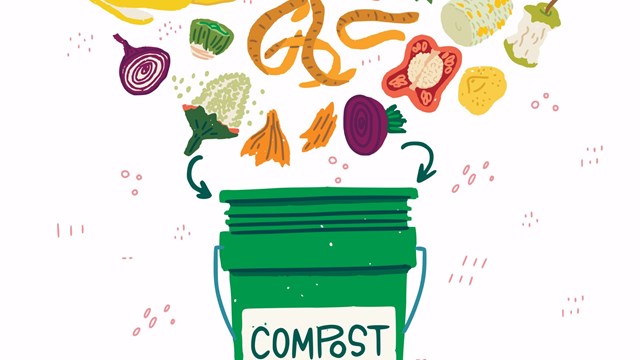
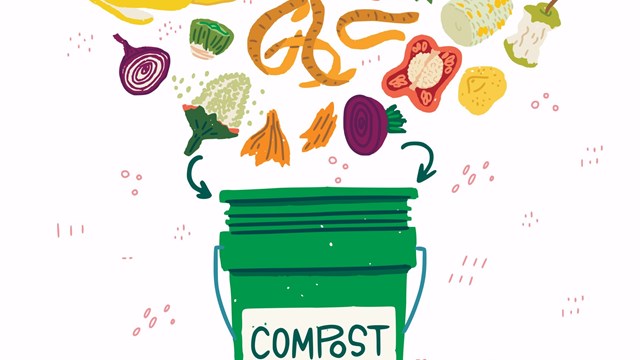
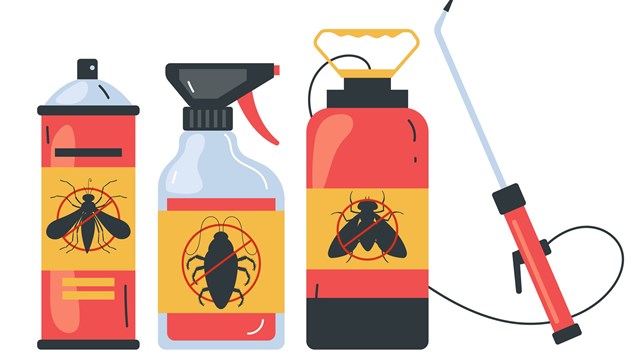
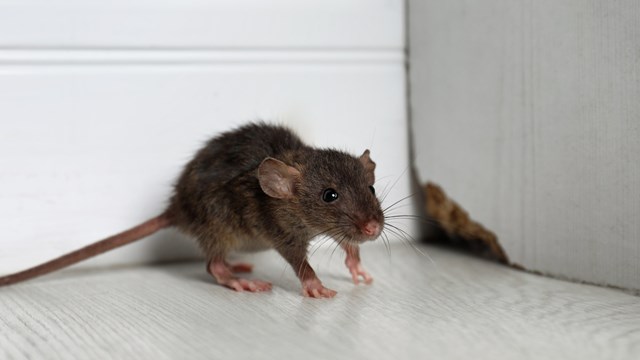
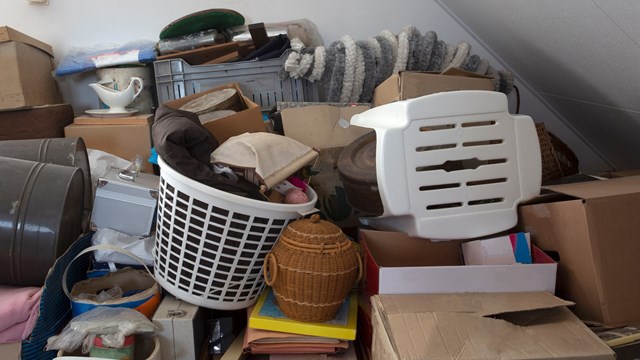
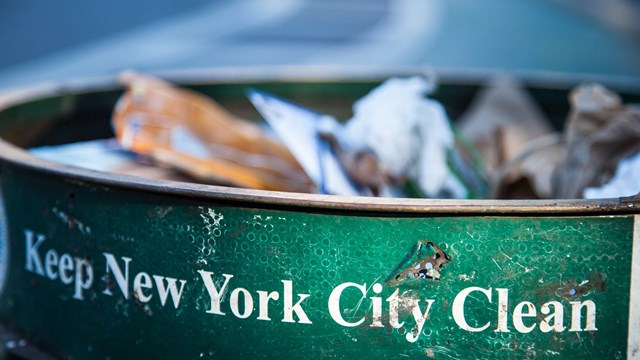
9 Comments
Leave a Comment